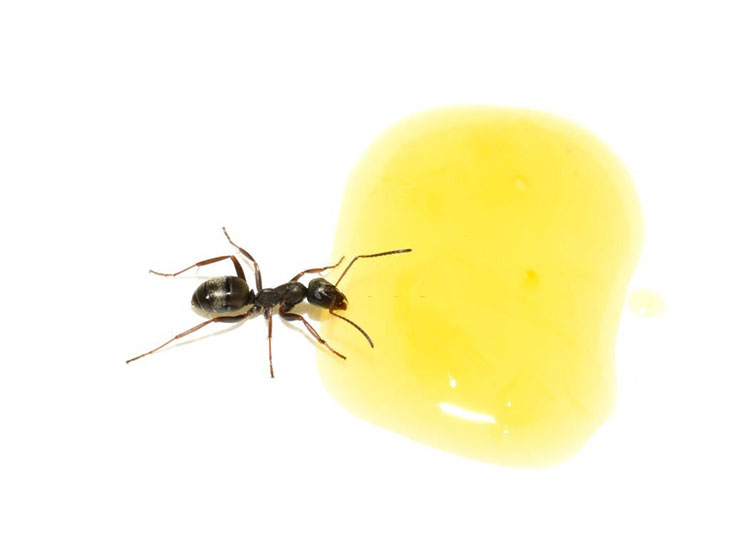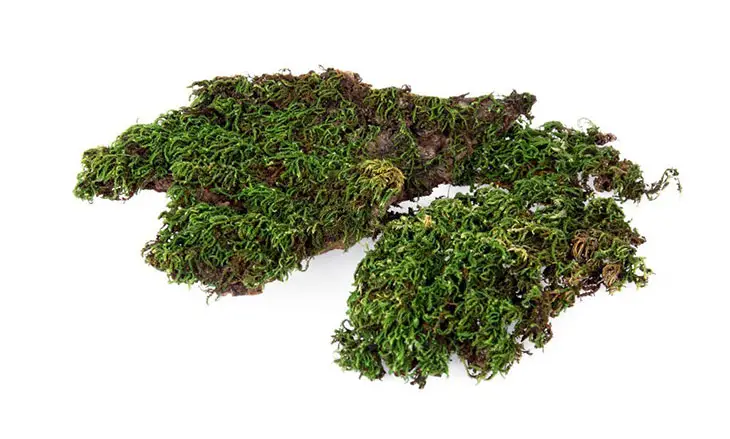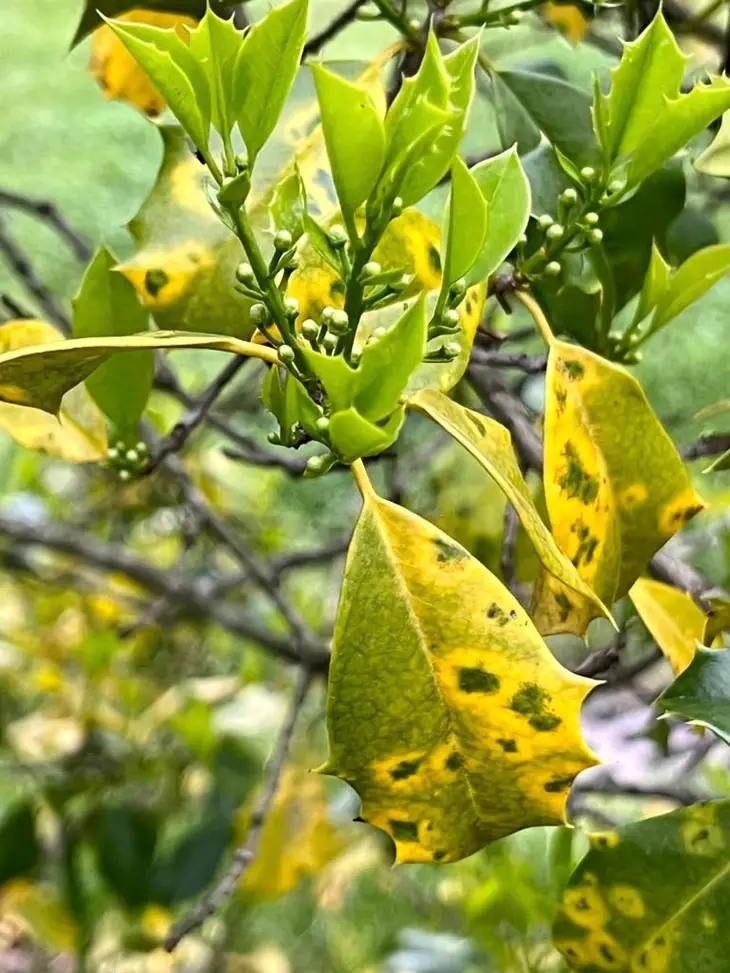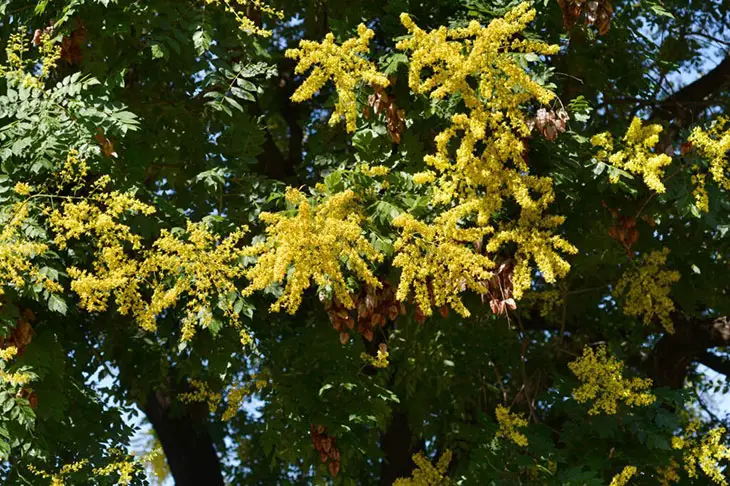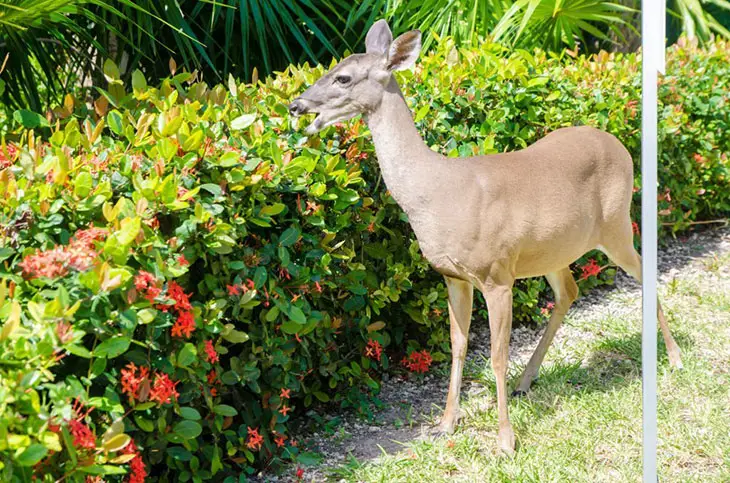
Geraniums, with their vivid colors, strong fragrance, and beautiful flowers, are common in gardens and landscapes.
However, beyond their aesthetic appeal lies a fascinating interplay between these plants and the herbivorous animals that inhabit their ecosystems.
What animals eat geraniums?
This blog delves into the intriguing world of herbivores’ dietary choices, shedding light on which type of animal consumes your beloved geraniums and the implications of these interactions on the plant-animal dynamic.
Why Do Animals Eat Geraniums?
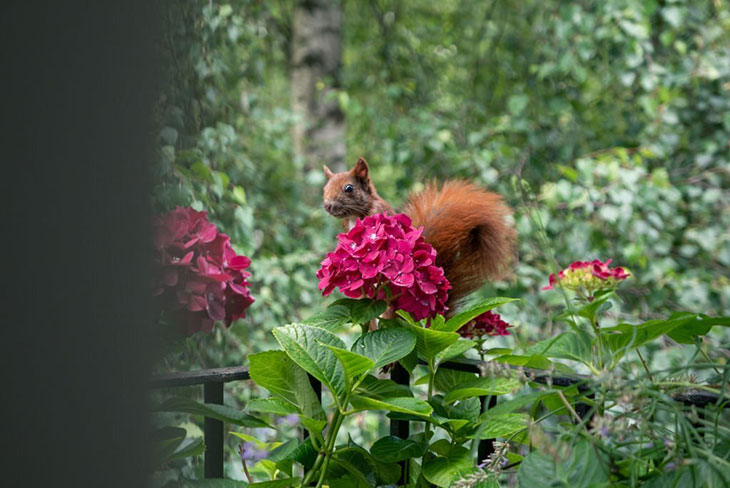
Animals are drawn to geraniums for a variety of reasons.
Firstly, these vibrant flowers are packed with essential nutrients, including carbs, proteins, vitamins, and minerals, which are crucial for an animal’s growth and well-being.
Also, some creatures are enticed by the delightful taste, texture, and good sense of smell of these types of flowers.
Therefore, learned behaviors and opportunistic eating come into play, as wild species make the plants a regular basis of their diet when they have discovered them to be both safe and nutritious.
Additionally, over time, certain wild animals have fine-tuned their digestive systems to process geraniums, adapting to their unique chemical composition.
Shifting seasons also influence consumption patterns. Some picky eaters have cleverly developed ways to counteract the defensive compounds in the flower buds, allowing them to embrace this food choice.
As a result, when primary food sources are hard to come by, geraniums become their viable alternative.
Ultimately, this intricate interaction underscores the fascinating relationship between herbivores and the realm of plants. So What eats geranium flowers?
What Animals Eat Geraniums?
Annual geraniums are consumed by a range of herbivores, including deer, rabbits, insects like caterpillars and beetles, garden pests such as snails and slugs, goats and livestock, and occasionally pets like dogs and cats.
Deer
Do deer eat geraniums? Do deer like to eat geraniums? Yes! Deers, as the common type of graceful and iconic herbivores, play a significant role in shaping plant communities, including geranium populations.
These animals are known to consume a wide range of plants, and it’s not uncommon to see deer eat geraniums.
However, their browsing habits can cause notable damage to the plants, as they find the tender foliage and colorful blooms quite appealing.
Rabbits
What eats geraniums? Rabbits are ferocious eaters of plant matter, mostly geraniums, due to their high reproduction rates and ongoing demand for food.
Geraniums are a readily available and appetizing option for rabbits when other food sources are limited.
In addition, the leaves and stems of geranium flowers are frequently targeted by these little creatures, which can result in defoliation and a decline in the plant’s health.
For landscapers attempting to maintain healthy flower beds, the adaptability and perseverance of rabbits can be a concern, prompting preventative measures like physical barriers and habitat alteration.
Insects
The intricate world of insects introduces another layer of herbivory to the geranium story.
For example, like the blossom bronze moth, caterpillars consume geranium leaves for their development and growth.
On the other hand, beetles, such as the Japanese ones, are attracted to the flowers of geraniums due to their delightful colors.
Although individual insects might not substantially destroy the flowers, a high population or infestation can collectively impact their aesthetic and functional qualities.
This highlights insects’ ecological importance as consumers and pollinators in geranium ecosystems.
Snails and Slugs
In the realm of garden pests, snails and slugs emerge as stealthy adversaries of geraniums.
These slimy creatures are notorious for their nocturnal feasting habits, which can leave behind a trail of destruction on the plant leaves.
With an appetite for tender foliage, they create irregular holes and ragged edges, tarnishing the beauty appeal of the blossoms.
Their methodical consumption can be particularly frustrating for gardeners, as their quiet but persistent nibbling often goes unnoticed until the damage becomes apparent.
Goat and Livestock
In rural landscapes where geraniums might coexist with grazing animals, the occasional consumption of these plants by goats and other livestock can occur.
While geraniums are not a staple in their diets, the opportunistic nature of these animals leads them to sample a variety of vegetation, including geraniums, when they are part of their surroundings.
The impact of goats and livestock on this type of flower is usually minimal, as these creatures prefer other forage options.
However, it’s not uncommon for them to munch on the occasional leaf in areas where the flowers grow alongside other plants.
This interaction exemplifies the adaptability of livestock to their environment and the mutual relationship between plant and animal life in rural settings.
It’s significant for gardeners in such regions to strike a balance between their love for geraniums and the presence of livestock in their surroundings.
Pets
In the tapestry of geranium protection, the appearance of pets weaves a unique thread.
With their instinctual territorial nature, dogs can inadvertently deter herbivores from the plant through their scent and mere presence.
However, some breeds might express curiosity that could trigger unintended trampling.
Cats, while not usually inclined to feed on geraniums, can find these species intriguing. Their nibbling and pawing are often driven by curiosity rather than hunger.
In addition, other small pets like rabbits or guinea pigs might also question geraniums. Their interactions could range from harmless investigation to actual nibbling.
How To Protect Geraniums From Animals?
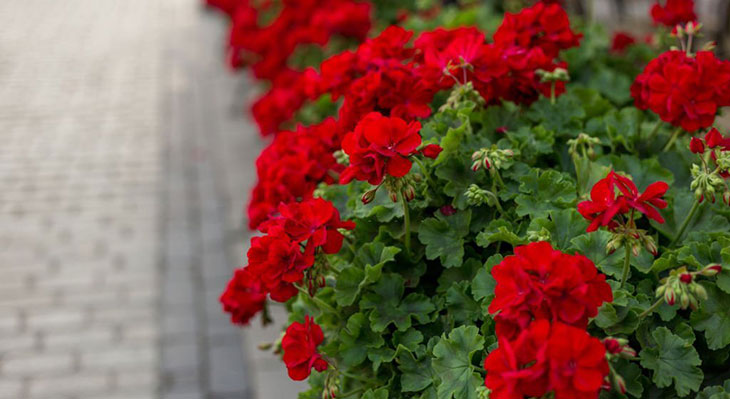
From larger mammals like deer to smaller pests like rabbits and insects, various creatures can threaten your geraniums.
Fortunately, a range of protective measures can be employed to deter these potential pests and preserve the beauty of your blossoms.
Fencing
Fencing is a time-honored method to thwart larger animals like deer geraniums from accessing your flower haven.
A well-constructed fence’s visual and physical presence sends a clear message to these grazers: this is off-limits.
Depending on the size and scale of your garden, you can opt for tall wooden or metal fences or oven mesh netting.
However, ensure the fence is tall enough to deter jumping deer and sturdy sufficient to withstand their attempts to breach it.
Repellents
Repellents tap into the power of aromas to create an invisible shield around your plants.
These concoctions emit odors that animals find repugnant, keeping them from approaching. Commercial repellents are readily available and can be applied directly to your geraniums.
Alternatively, concoct your repellent using ingredients like crushed garlic, chili pepper, or essential oils.
The lingering scent serves as a “keep out” sign for animals, allowing your geraniums to flourish without becoming a feast.
Companion Plants
Certain herbs and flowers possess scents that repel herbivores, making them ideal companions-plant aromatic herbs like rosemary, thyme, sage, or lilac with a strong smell alongside your geraniums.
These fragrant allies confuse animals’ senses and make your plants less attractive targets.
Moreover, diverse plants create a thriving ecosystem that attracts beneficial insects, contributing to overall garden health.
Scare Tactics
Employing scare tactics introduces an element of surprise that discourages animals from treating your geraniums like an all-you-can-eat buffet.
Reflective objects, noise-making devices, or even motion-activated sprinklers can startle the animals, making them seek sustenance elsewhere.
Ultimately, the element of unpredictability disrupts their feeding routines and makes your beautiful flowers a less appealing option.
Predator Decoys
Placing lifelike decoys of natural predators such as owls, haws, and sometimes snakes in your garden sparks the illusion of danger.
Herbivores are sensitive to potential threats and will instinctively steer clear from their imagined adversaries.
Pruning
By selectively removing lower leaves and excess growth, I can make my geraniums less accessible to animals seeking a meal.
Also, pruning geraniums promotes healthier growth by redirecting nutrients toward new shoots and blossoms.
This well-timed practice not only thwarts herbivores but also enhances your geraniums’ overall vitality and aesthetics.
Netting and Covers
Geraniums are protected from pesky animal paws and beaks by netting and covers, which serve as an invisible fortress. These physical barriers ward off larger pests, like birds, and smaller ones, like insects.
Secure the netting or cover over your flowers so that it blocks possible diners’ access while enabling light and water to reach the plants.
Raised Beds or Containers
Raised beds elevate your geraniums out of reach, while containers provide mobility and control over growing conditions.
Creating a vertical barrier by growing stunning flowers in raised beds or containers fortifies your defenses against ground-dwelling herbivores such as rabbits.
Regular Inspections
Maintaining vigilance through regular inspection is the foundation of effective geranium protection.
Typically, I will assess my plants for signs of infestation. This way, I can quickly identify any threats and take prompt action.
Remember, early intervention can greatly reduce the impact of unwanted animals and stop major damage from occurring.
Water Repellents
Water repellents transform your breathtaking flower beds into less appealing targets by preventing water from adhering to their leaves.
Animals seek moisture-laden plants for sustenance, and when your geraniums are less water-friendly, herbivores tend to turn their back on your flowers.
Apply water-repellent solutions to create a temporary barrier, leveraging nature’s chemistry to protect your blooms.
Ultrasonic Devices
Harnessing technology, ultrasonic devices emit high-frequency sound waves that are uncomfortable for animals yet inaudible to humans.
These devices disrupt the tranquility of different wild species, deterring them from frequenting the area.
Strategically placing ultrasonic devices near your geraniums generates an unwelcome environment, influencing herbivores to seek sustenance elsewhere.
Pet Presence
Inviting pets into your garden serves a dual purpose: companionship and protection.
Dogs, for instance, have an innate territorial instinct that deters wild species from approaching. Their presence alone can discourage animals from venturing near your geraniums.
However, be mindful of your pet’s behavior around the plants to ensure their safety and the well-being of your stunning blossoms.
Remember, the effectiveness of each approach may vary based on the animal species prevalent in your area and the specific conditions of your garden.
By protecting your geraniums, you can continue to enjoy their beauty and vibrancy without worrying about them becoming a tempting meal for passing wildlife.
Frequently Asked Questions
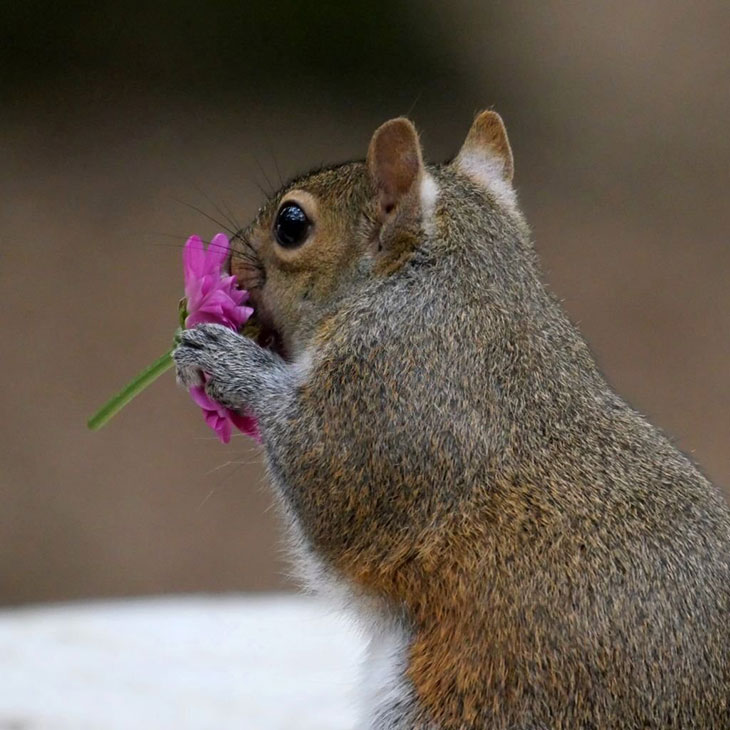
Do All Species Of Geraniums Attract The Same Animals?
Not every kind of species of plant attracts the same animals, and the susceptibility to animal attacks can vary based on factors such as the plant’s scent, taste, and availability of alternative food sources.
Different species of geraniums might have varying levels of palatability and attractiveness to herbivores.
Furthermore, some animals may be more drawn to certain species of geraniums due to their unique characteristics.
Are There Specific Seasons When Geraniums Are More Vulnerable To Animal Attacks?
Yes, there are certain seasons when the target flowers can be more vulnerable to the attack of animals.
The risk of such attacks can differ on factors like the sources of food, temperatures, weather conditions, and animal behavior.
- Spring: New geranium growth after winter attracts herbivores seeking nourishment. Animals like rabbits, deer, and insects are drawn to tender shoots and leaves.
- Summer: Reproductive needs increase for many types of animals, leading them to search for energy-rich sources like geraniums. Therefore, heightened animal activity means insects and birds might feed on the plant’s leaves and seeds.
- Autumn/Fall: Animals may intensify foraging as fall approaches, with diminishing fruit and food sources. Geraniums become alternatives for sustenance and animal movements peak.
- Winter: In milder regions, green geraniums remain accessible, while colder areas see these plants stand out against the snow, captivating active species like deer and rabbits.
The Bottom Line
In the intertwining dance of nature, the relationship between geraniums and herbivorous consumers serves as a reminder of the complex connections that sustain ecosystems.
What animals eat geraniums?
From the subtle munching of insects to the more conspicuous browning by larger animals, the dietary choices of various creatures contribute to shaping the vitality and resilience of both flora and fauna.
Understanding the intricacies of what animals consume in hardy geraniums reveals a better appreciation for the web of life surrounding us as we investigate the balance between these elements.
